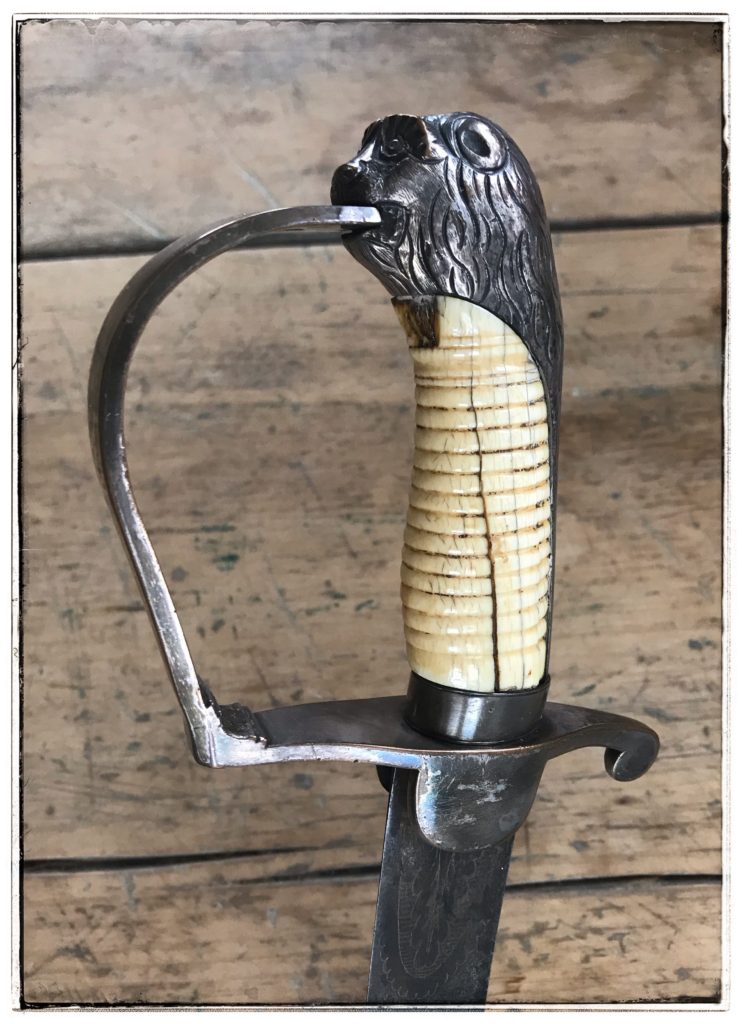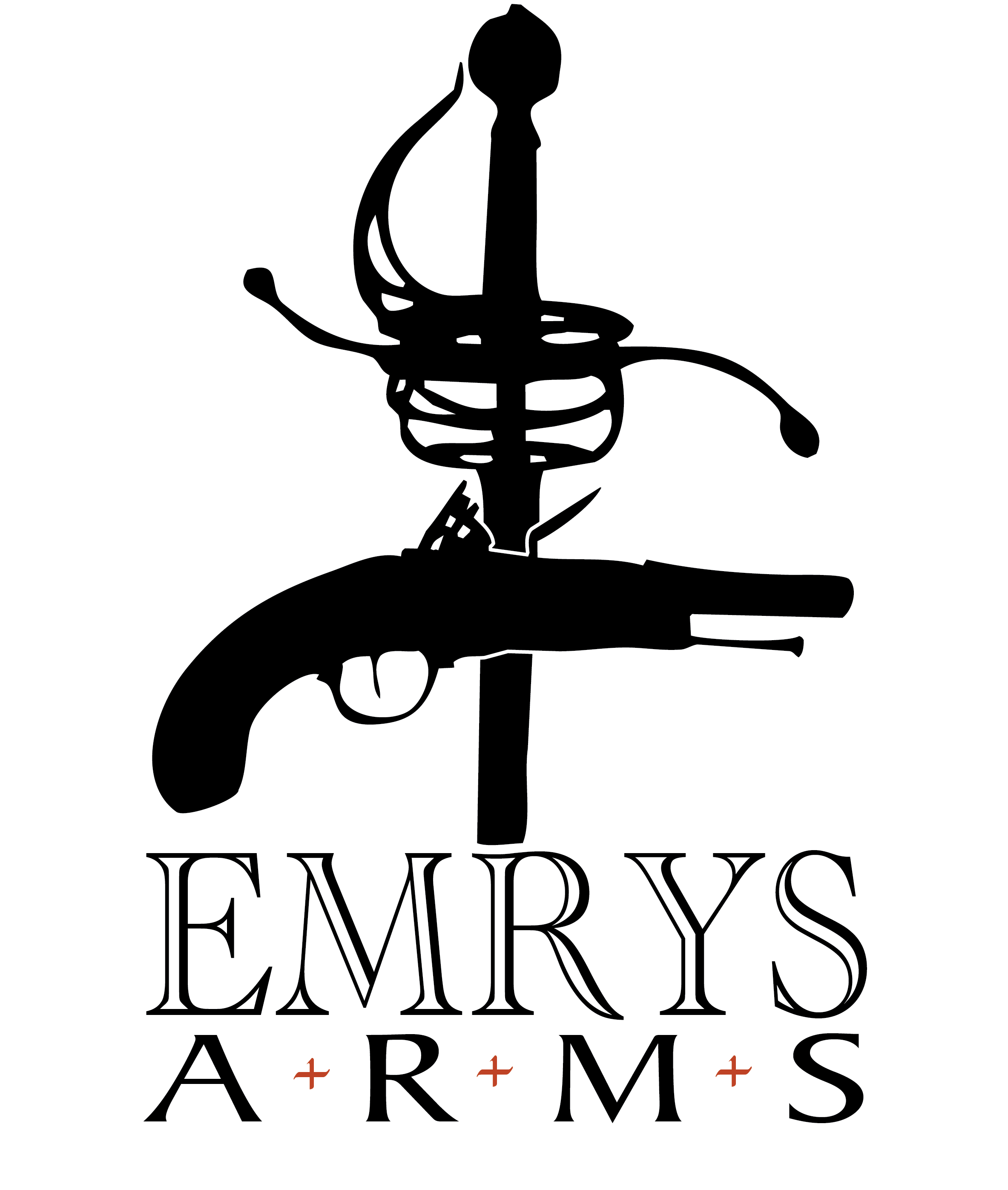| Collection #: | 2020.006 |
|---|---|
| Type: | Infantry Flank or Cavalry Officer |
| Nationality: | British |
| Pattern: | c.1790 - 1814 |
| Date: | c.1790 - 1814 |
| Hilt: | Siler Plated Brass |
| Blade Length: | 77.5cm (30 1/2") |
| Blade Width: | 3.5cm (1 3/8") |
| Overall Length: | 90.5cm (35 5/8") |
| Maker: | No Maker's Markings - lots of others |

A senior flank or cavalry officers sword out of Nova Scotia with an extremely curved and very (trust me) sharp blade! Dating most likely towards the later 1700’s creeping into the early 1800’s, the lion head pommel is reminiscent of the earlier British Infantry Officers short sabre and a precursor of what would become the established 1803 Pattern Officers sword. The bronze (or copper, the highlights showing through have quite an orange tinge to them) hilt is silver plated with an ivory grip. The decoratively reinforced guard seems to be an in-between hybrid of the older ‘D’ guard style almost transitioning to the newer ‘P’ guard. The aged white ivory (usually denoting a higher rank) is cracked (as ivory is susceptible to extreme humidity – so other collectors have taught me) but is solid without movement. In fact, the whole sword is quite solid and feels quite formidable in your hand. From the file marks on the pommel, it is possible that someone has disassembled (or attempted to) this sword to stabilize the ivory handle.
The exceptionally curved blade is flat (without any fullers) and decorated with gold inlay. Starting at the right side forte (the part of the blade directly beneath the hilt) is a floral design that extends out from underneath the langets followed by a further floral decoration. Then a standing dragoon with his sword in guard position concluding with a floral wreath (with a small lions head [?] ) above him. The left hand forte begins with the same floral design as the right, moving to another floral design. Next is a trophy of arms consisting of a halberd, drum, sword, lance topped with a dragoon helmet. Above that in very fanciful script is ‘GR’ capped by a crown followed by a final floral display. The false edge on this sword also appears to be exceptionally long at 36.2 cm or 14 1/4” – almost half way back down the blade!
As a side note, the book Georgian Canada – Conflict and Culture 1745 – 1820, contains a similar but much more embellished example. This one a solid silver hilt with hallmarks (helpful for dating) I presume ivory grip – though it does not state it and the photograph is black and white. Lion head pommel with a similar cant to the guard ie. not quite a ‘D’ guard, but not quite a ‘P’ guard. The description reads “This sword is a presentation variation of the 1796 pattern infantry sword [ I believe they may have meant cavalry sword as the 1796 pattern infantry sword is a completely different design]. It was a gift to Chief Little Knife from Lieutenant Colonel Robert McDouall, who was in command at Michilimackinac when it was successfully defended against the Americans in 1814. The silver hilt with marks for 1813 – 1814, is attributed to George Turner of Exeter. Fourteen other such swords were presented to various recipients in Montreal in 1814, but none of them is now known.”
This was never an official pattern, but a private purchase sword. I would be tempted to think this is one of the lost examples except that this one is not ornamented nearly as nicely as the photographed example. Lion head pommel – Yes, but not in as fine a detail; silver hilt – yes, but silver plated; overall similar guard design and decorated blade. The question may be – were they all the same level quality of workmanship? Or various degrees? Most likely this is not one of the fourteen…
We use cookies to improve your experience on our site. By using our site, you consent to cookies. Enjoy the cookies...they're delicious...
Websites store cookies to enhance functionality and personalise your experience. You can manage your preferences, but blocking some cookies may impact site performance and services.
Essential cookies enable basic functions and are necessary for the proper function of the website.
Statistics cookies collect information anonymously. This information helps us understand how visitors use our website.
Google Analytics is a powerful tool that tracks and analyzes website traffic for informed marketing decisions.
Service URL: policies.google.com (opens in a new window)

